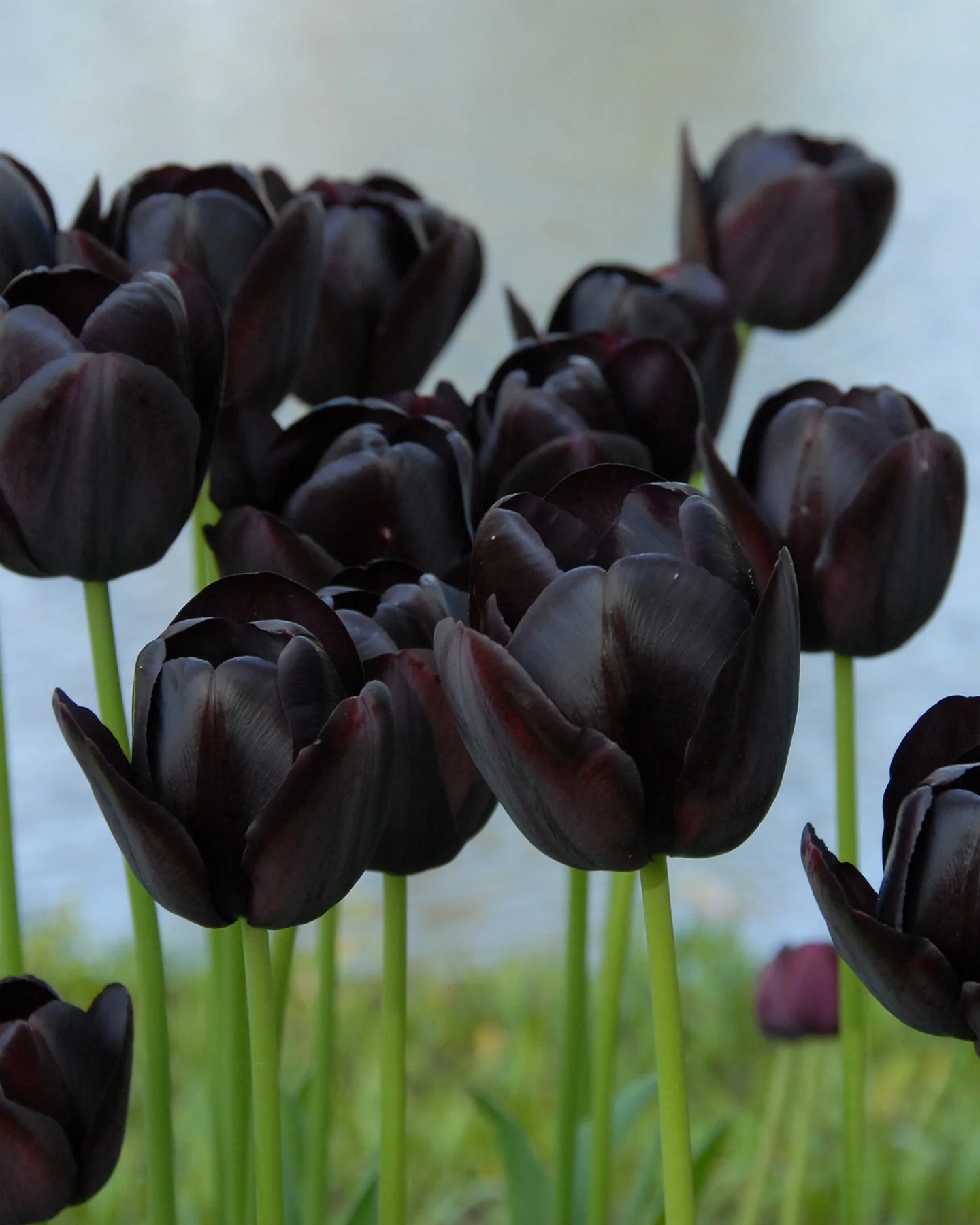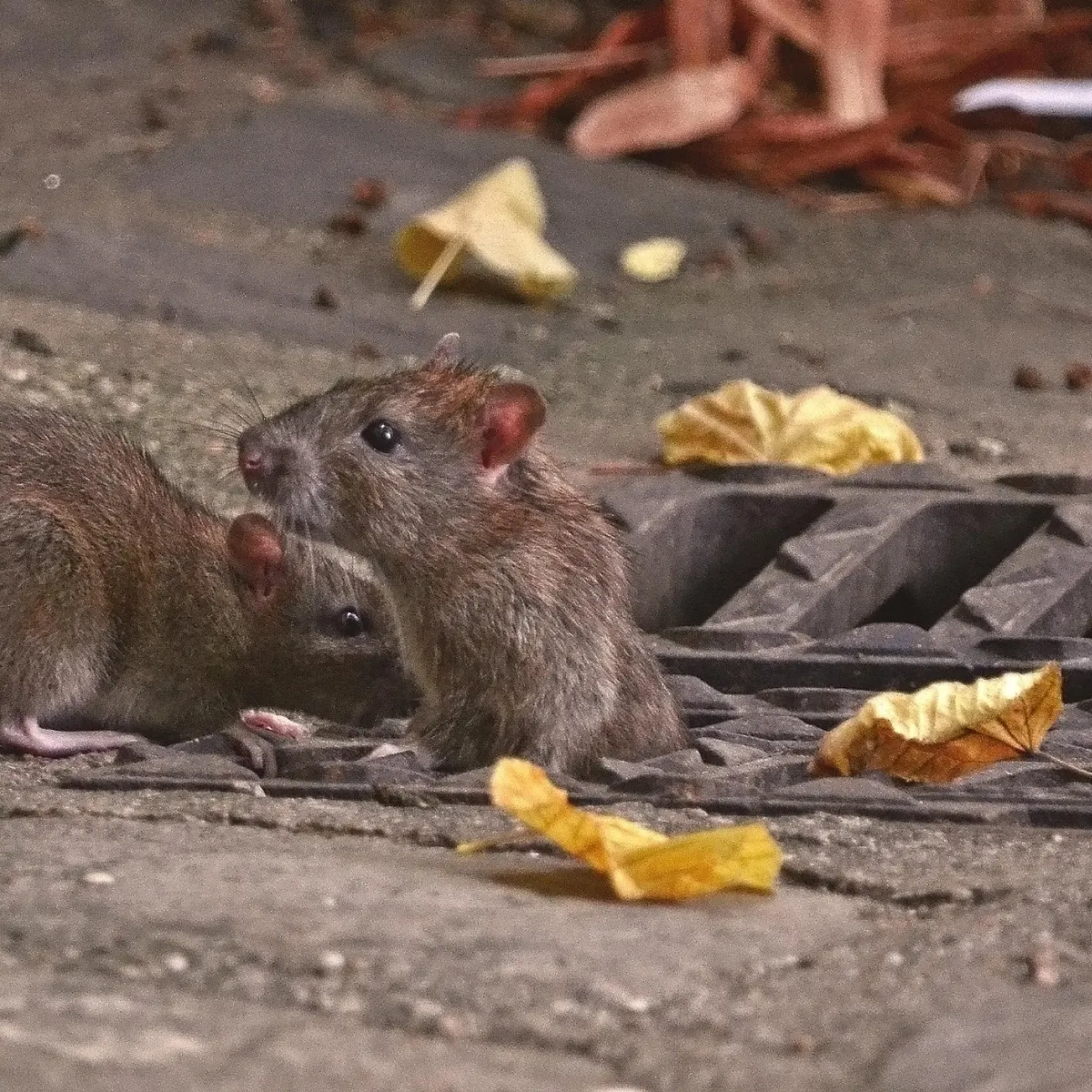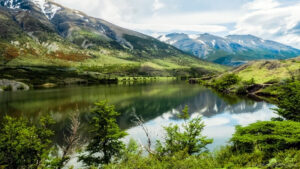
Not particularly original, I am writing about a task that I hope to see constructed as a legacy, which I want to leave. I have wanted to do it for over a decade, but as I can no longer garden, this is by way of stating what I would appreciate incorporated in my version of the “Gothic Garden”. Above is the Black Bat flower which grows in tropical areas, but also if nurtured in a sub-tropical climate such as Sydney’s.
We already have grown blue lady hellebores. Ours were that indigo blue. The hellebores are a beautiful flower and these shelter under the bromeliads, themselves in the shade of Japanese maple trees; the great virtue of hellebores is they do not drop their flowers. They stay on the stem until the end.
Among our plantings we have planted black basil – well at least deep purple, I think it was called black opel basil. We have recently started growing black Tasmanian pepperberries naturally in Tasmania; yet they may not fit into the proposed garden, as may not black chili peppers- with confronting names such as Royal Black, Dracula Black, Cobra Black, or even Black Pearl, which may be better peering out from pots.
Discussing the plan, we were unsure whether we have ever had any black devil pansies in the garden, because we used to plant them and the parent violas once a upon a time, and we remember having dark pansies, but the black devil pansies or any of that ilk, we’re unsure. Add the black velvet petunias, which are in short supply, and they may be better planted in a hanging box.
Black bamboo – I have seen black bamboo in the Kandy botanical gardens, part of which is dedicated to different varieties of bamboo, the clumping rather than the running variety. Then there is black Mondo grass, which is a stalwart of the garden designers, and to a lesser extent the elephant ears and potato vine, but these are really background in this gothic orchestra of darkness.
At the other end are aeolian succulents in various shades of deep purple, not actually black, but probably can form dark dots across such a proposed garden.
Then there are black hollyhocks, black siberian iris, black dahlia, and other plants that could qualify for inclusion in such a garden. Paul Bonnie, an Oregon nursery owner, has written a booklet entitled “Black Plants: 75 Striking Choices for the Garden” highlighting them.

The most famous flower associated with black is the black tulip. The novel by Alexandre Dumas (himself a quadroon in the lingo of the times), was written about a tulip grower, wrongly imprisoned, who grew the black tulip during that time, eventually exonerated with the love of his life waiting. The modern “Queen of the Night” black tulip has the colour of a bruised plum and was first grown in 1944, during the occupation of the Netherlands during World War II. Luckily the “Queen of Night” bulbs were not eaten by the starving Dutch, since tulip bulbs were a staple among the famished.
The other touch for such a garden is to have a sprinkle of white flowers which have dark foliage. Gardenias are mentioned as one choice. Maybe it‘s a good counterpoint, and there are certainly more of these.
I mentioned that I was not all that keen on all the gothic clichés, with their overtones of Hallowe’en, which has nothing to do with Australia, but my wife’s suggestion to just call it “black” was confounded by nature which wants her flowers to be able to manufacture chlorophyll and be pollinators. Notwithstanding, the black flower is the Holy Grail for the horticulturalist wishing to snatch this version of the Holy Grail, even though it would confound Nature. The closest to reaching this is apparently the black petunia.

And as for calling it the “Ultra-Violet Garden”, no it is not. Most of black flowers are a deep purple or red.
But perhaps the “Jerusalem” garden – those “dark satanic mills”. A tribute to those who still walk in a carbonised world writ large in Indian ink. But this garden will epitomise black beauty – an exercise in irony.
Blake himself wrote:
But to the eyes of the man of imagination, nature is imagination itself. As a man is, so he sees. But to the eyes of the man of imagination, nature is imagination itself. As a man is, so he sees.
So goes my vision.
Real Men Don’t Hit Women
“RBT in NSW saw an immediate cut of 23% in the road toll, or nearly 300 lives. Its impact was maximised by a massive advertising campaign essentially telling motorists they were likely to be breathalysed if they drank and drove (older readers can probably still hum the jingles from the ads) and specifying the punishments that awaited them.
“There was no talk of intervention or education programs for drink drivers. Critically, motorists, and not just working-class motorists but every driver from the outer suburbs to Bellevue Hill and Mosman, believed that the chances of them being caught and punished had increased significantly, and began changing their behaviour.” Crikey May 2024
In 1982, when I first met Jack, he was the Deputy Secretary General of the Australian Medical Association. He briefed me to write an experimental television campaign to discourage drinking and driving among young men. His idea was that it would run just in Wollongong and be scientifically assessed. It did, it was, and the success of Jack’s idea — published in the Medical Journal of Australia – led directly to my brand-new ad agency being awarded the campaign to launch a radical, controversial initiative. It was called Random Breath Testing.
So spectacularly successful was RBT in terms of its immediate reversal of the road toll, it put the fledgling agency on the map. Suddenly I was a champion of sorts, thanks to Jack who’d championed, just weeks before, an idea to cut the shocking road toll via television advertising. – John Bevins Foreword to 35 Poems.
Crikey singling out the RBT campaign as one that worked brilliantly, then failed to follow through as to how it came about. Two words – John Bevins.
John Bevins was the genius behind the RBT program. He was very generous to me in his foreword. The history was that I had obtained $50,000 from Government to enable the AMA to run a pilot anti-drink driving campaign in Wollongong in 1982. John and his crew ran the campaign. The advertisement run on the local television resembled the classic beer advertisement with all the cheery background. The tag line was “Real Men Don’t Drink and Drive.”
The evaluation of the program showed a marked drop in the incidence of drink driving over the screening of the advertisement. and following for the period of evaluation. The rest is history, but there is a lack of curiosity about the players in this highly successful campaign. Many of them are still alive, with cognitive ability unimpaired, who the Government would benefit by consulting.

Think “Real Men don’t hit Women”. This was the theme of a campaign in Moldova in 2013, which is worth watching.
Murder is the extreme, but as I was looking through material which I had roughly archived for other reasons, I came upon a 2002 issue of the Warrnambool Standard describing the committal of one Graeme Slattery.
The judge in sentencing Graeme Slattery, then 42 and with a lifelong history of shaming and undertaking sadistic acts on women, said among other things: “You may not have taken the life of any of your victims but … you took part of the lives of some of them from them, particularly the two women you enslaved”. Slattery receive eleven and half year’s imprisonment, paroled after ten years.
What the headline of the Warrnambool Standard ran on his committal “Shock Reunion – Police surprised by alleged slave”.
What the heading ignored were the litany of disgusting acts this woman who was imprisoned in Slattery’s garage, was forced to do. Instead, the newspaper highlighted the fact that the woman subsequently, being removed from Slattery’s clutches, met him again in Echuca in her own volition, as suggested by the headlines. The headline seemed to absolve Slattery of some of his sadism towards the woman. But here was a horrendous case. What did the Warrnambool community do about this to ensure it did not happen again?
Then, contributing to this denigration of women for many years, is the Bond of “Chesty Bond” fame highlighting a cheery muscle-bound male image, producing a “Wifebeater” singlet.
Therefore, the images of male violence are constantly being reinforced, and have been since I was a child. The furore this week over the boys at Yarra Valley Grammar School has been going on for ever. Adolescent boys under the stimulus of their changes into adulthood are in a vulnerable time as are girls. However, I can only speak as being a male teenager. A variation of the Yarra Valley ranking existed when I was at school over 60 years ago among some of the boys at the school. I am not excusing the behaviour but vilifying four boys will not solve the problem of being a teenager.
The problem is that society relies on the police force to intervene and the simple solution is put the problem out of sight or “handball” it to someone else.
Assuming that abuse of one’s partner occurs by allegedly sane men, then peer pressure is useful if it is sustainable. The problem is that the tokenism inherent in acts such as footballers clustering in circle and other self-limited expression is having little impact and are soon forgotten.
As I wrote earlier this year: Yet that conceals widespread conflict and violence in the community; and I, like most people, am reluctant to intervene, especially when fists are flying, and knives are flashing. Let’s be frank, nobody is properly trained to intervene. The socially concerned may preach to audiences, often inappropriate because the audience have the skills to deal with conflict or well-honed sophistry of denial of such involvement. In other words, the members of these audiences nod their heads sagely and issue “the tut-tut” of the judgemental. Therefore, mostly conflict is allowed for the parties to resolve themselves. This leaves a considerable body of people who do not have the skills to handle conflict.
The Federal Government has produced a report, long on analysis and process, but never ever addresses the question of “what shall we do tomorrow”. The problem also is that in this area we have residues of policies that do not work. The obvious one is that this unresolved matter is handballed to anonymous telephone numbers, such as Lifeline, 1800 Respect and the ilk. They are a convenient full stop for the media, to move on to the next topic or, as current breakfast show speak has it, “now for a change in pace”. This has become a reflex.
What to do tomorrow, in addition to an advertisement campaign directed to changing attitudes and behaviour and not just pamphleteering? Ask the male and female guys who were involved in the successful campaigns for their advice.

Secondly, following on what the Forbes Mayor had to say after the death of Molly Ticehurst, the challenge is to set up refuges in every small town such as Forbes. If the Forbes community is as supportive as the mayor says, then it should be able to use those underused community premises and provide security. She says that she intends to protect her community, well manning such a refuge would be a fulfilment of her intention. After all, the community expects the hospital to provide a 24-hour service; why not a refuge on 24/7 basis.
Furthermore, most of the uniformed services, whether the ambulance or fire services, exist with significant down time, but are rostered to serve in emergencies – and the community would not consider any suggestion not to have them serving the community on a 24 hour basis. When I hear politicians wanting to assign “trained” people such psychiatrists to a national program, the assumption is that such a demand is implementable.
In reality, there are just not the resources available and further, it suggests that parachuting health professionals who are increasingly differentiated into one specialty area and who will drop everything and become involved in what is a very complex and unappetising challenge is simply not a practical solution. Thus, like all volunteer emergency programs, such a challenge will find out who is willing to become trained, be given a distinctive set of gear and be rostered on for such a service on a 24 hour basis in the community … plus the actual denominator (in other words the volume of those presenting and finding out empirically what works).
This is the challenge for the Forbes local government, where the mayor announced that she is determined to protect the community, and interposes the community between the last resort, the police who, with all due respects, are associated with violence as the first response compounded by a perceived lack of empathy. See what is the actual response to such a suggestion from a community who should be prepared to be positive about such commitment. The challenge could start today, and if successful could be spread across regional Australia.
As an example of an idea which started as a small project in Cloncurry with an indeterminate future became the nationwide Royal Flying Doctor Service. Thus, the pilot (pardon the pun) can be implemented rather than “kicking the can down the road”, with an associated tangle of undergrowth of arbitrary regulation impeding equitable implementation, metaphorically growing over the road where the can has been kicked. Royal Commissions are a classic “can”, but at least they assure the increased sale of luxury cars to the lawyers as the most visible outcome.
The Queensland Government’s intention to provide a room as a refuge in police premises seems, on the surface, to be a good idea but needs to have a person on duty who is trained in dealing with such an emergency. It is more than just a room. Just imagine an emergency room in a hospital without appropriately trained staff.
I have dealt with a presumed “sane person” partner beater. One further area, which I have witnessed in a community has been the impact of the “mad man” and worse the “mad and bad man”, predominantly – but not to exclude a woman equally afflicted. These people need recognition in the community and exclusion from the community, easier said than done. The more you delve into research the more you see that mental health issues combined with drug use (include alcohol?) in a poor and “unsafe” community is the base profile.
As one source reported, the most frequent response to the partner’s violence is to get away from the perpetrator; and efforts to leave are often blocked, sometimes physically, but more often because of strong psychological and emotional ties, not to mention financial problems, to their partners and especially their children.
I am a reductionist and as such can be accused of over-simplification.

Yet I have some success in my career of effecting innovation and change. Those who want “to shuffle the sand” and write reports as though unproven inputs are the solution are the bane of public administration. Throw money at the project, often with unrealistic conditions which would act against meaningful outcomes of benefit. But then how many programs are independently evaluated, rather than by “mates”.
I like to accumulate empirical evidence that a project works; and there was one example where I established a successful sustainable program, and then left the job. The program was dismantled by the ideologues because it did not conform to their theoretical model. That is the problem with social engineering how to ensure its sustainability when the creators are no longer there.
I have made two suggestions above and to battle the ideologues, who have never learnt from the old axiom, “if it doesn’t work don’t do it again”. Further, all successful change takes an average of 18 years to guarantee its longterm survival, even if in some areas it may be corrupted. So, guarantee the succession planning, because in this increasingly nomadic world, nobody sticks around for that long in the one job.
This is a continuing narrative because diminishing violence is at the heart of maintenance of a civilised community.
First answer the question, “What do we do tomorrow?’
A Sober Analysis
My first inclination is to consider that a dead rat is the only acceptable outcome. After all, the Norwegian rat was the vector for the Yersinia bacillus contained in the rat fleas – the causative factor in plague, the Black Death.
Added to my prejudice was that rats released from a ship, wrecked on Lord Howe Island in 1918, almost wiped out the unique native fauna and flora.
 In the block of flats where we lived when in Melbourne, we were always concerned that the garbage bins were regularly emptied, and that remnant food was not left on the ground.
In the block of flats where we lived when in Melbourne, we were always concerned that the garbage bins were regularly emptied, and that remnant food was not left on the ground.
I was reading an American report on the rat’s redeeming features, if you call them that. The complaints voiced from the American source are very similar.
I cannot argue against the general comment of managing the rat population will require cities to change. Proper disposal of waste will not only bring the number of rats down but will also protect people from potentially dangerous contact with them. If there are fewer rats rooting around in our trash, then more people might be receptive to thinking of them less as pests, and more as urban wildlife, like squirrels.
Having said that, the American suburbia is afflicted by more intrusive animals than Australia. I remember staying in a friend’s home in Berkeley in California where she had a problem with raccoons. Raccoons are very clever and can open cupboards and unscrew jars containing food. Unfortunately, they have not been taught to clean up after feeding.
Then there are the black bears with their propensity to scavenge in human settlement, overturning garbage cans and providing the environment for rats to revel.
Given the plethora of animals considered not to be urban, I wonder about the contention directed at people like me who are “effusively anti-rat” that it is important to be realistic about what our end goals are. Rats are part of urban ecosystems.
The American apologist for the persistence of rats sounds like surrender, but he may have a point. His apologia ends by him writing the following:
The ideal is to get them to a level where they’re not disturbing people, and causing any sort of emotional or physical or health-related risks, but we’ll never be able to eradicate them.
 If rat numbers are manageable, then I suspect more people (like me) will find the occasional rat appearance amusing, and not terrifying. Maybe. That would be ideal, because they aren’t going anywhere.
If rat numbers are manageable, then I suspect more people (like me) will find the occasional rat appearance amusing, and not terrifying. Maybe. That would be ideal, because they aren’t going anywhere.
They’re really resilient. They can rebound really fast if you knock them down,” I think that they are going to out-survive us on this planet.
The same argument I have applied to cockroaches. Nevertheless, my natural instinct is to kill every one I see in the house. Likewise with rats but refreshing to have a contrary view … perhaps.
Modest Expectations
Just another example of the vanishing “r”. Remember the incident when the “imprudent” lost its “r” and the Boss had a lot of ground to make up with the letter recipient.
About to “send”, the letter began “My dear fiend” – just quickly “ectified”.







 At one stage, I used to go for a run every day around the suburb, which contained many hills. Given that I instinctively loathed exercise, the surge of endorphins countered so effectively this loathing, that many times during a year I would engage what were laughingly caused “Fun Runs”. As I aged, the runs became long early morning walks; and then disease caught up and exercise became biweekly hydrotherapy sessions; and then with COVID causing the closure of the pools, desultory infrequent rambles – the walking restricted to climbing stairs, back stretches. This article in the NYT gave me some hope. I have edited the original article, but have noted the contribution from a University of Sydney expert.
At one stage, I used to go for a run every day around the suburb, which contained many hills. Given that I instinctively loathed exercise, the surge of endorphins countered so effectively this loathing, that many times during a year I would engage what were laughingly caused “Fun Runs”. As I aged, the runs became long early morning walks; and then disease caught up and exercise became biweekly hydrotherapy sessions; and then with COVID causing the closure of the pools, desultory infrequent rambles – the walking restricted to climbing stairs, back stretches. This article in the NYT gave me some hope. I have edited the original article, but have noted the contribution from a University of Sydney expert.




